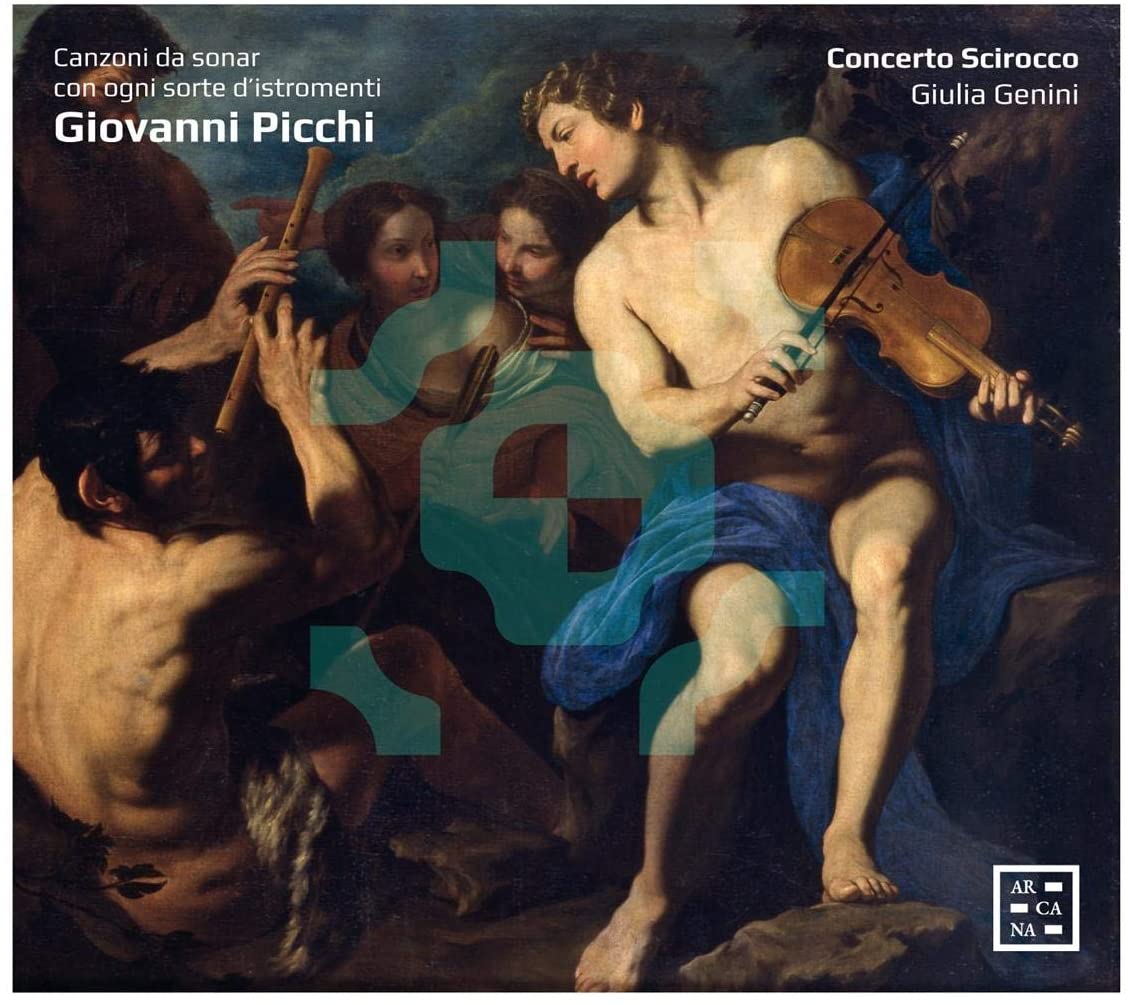Concerto Scirocco, Giulia Genini
71:29
Arcana A476
Click HERE to buy this recording on amazon.co.uk
Published in 1625, Picchi’s 19 Canzoni da sonar range from duets with continuo to full two-choir pieces. Rather than always stick to the composer’s suggested scorings, Concerto Scirocco switch one of a pair of violins for a cornetto; this helps to vary the soundscape, of course, and it seems churlish (given such fabulous performances) to suggest that that might not be what “con ogni sorte d’istromenti” means. My only other (minor) gripe about the performances is the use of the piercing soprano recorder; as a recorder player myself, I really do not enjoy the way it slices through the texture – give me a more mellow tenor instrument any day. Although the duo and trio sonatas with their kaleidoscopic structures are very pleasant, for me Picchi really comes alive when he has four melody instruments (or more) and the three six-part canzoni are fabulous pieces, displaying the composer’s ample talents as a contrapuntalist but not in an arcane way, rather in conjunction with easily memorable melodies. In the two-choir pieces, two pitch equal choirs against one another (in these performances strings against wind in one, and two mixed choirs in the second) and then a high choir against a lower one. Over the course of more than an hour, listening to the texture grow and enriching is wonderful, though I’m not sure Signor Picchi had that in mind! Hats off to Concerto Scirocco for sustaining my interest – but for your next recording, please, please ditch the high-pitched recorders!
Brian Clark

One reply on “Picchi: Canzoni da sonar con ogni sorte d’istromenti”
Hello Mr Clark and thank you for your review. About the choice of using soprano recorders: it’s not only a matter of taste I am afraid. The use of such instruments in venetian early baroque repertoire is supported by evidences in contemporary repertoire, check out G.B Riccio’s “flautino” which he uses in combination with sackbuts, fagotto and violino… and also Monteverdi’s “flautino a la vigesimaseconda” was surely not a tenor recorder. Different of course is the situation where the recorder is together with violins in Canzon Nona, where the composition is clearly “a tre soprani” , meaning that the suono reale of the recorder needs to be in the same octave as the violins… for that, the use of a tenor seemed surely more adequate. And about the “per ogni sorte d’Istromenti” matter, and the relative freedom a performer can apply to composition with such title, I think you can find the perfect explanation in Massimiliano Neri (Sonate Opera Seconda, Venezia 1651) : « Amico Lettore, resta contento ch’io t’averta, che se bene nella sopradita tavola per ciascheduna Sonata vanno assegnati gl’Istromenti, tuttavia resta alla disposizione di chi vorrà servirsene cambiarli à proportione sodisfacendo al proprio gusto, & havendo riguardo alla commodità. ». Best regards
Giulia Genini / Concerto Scirocco